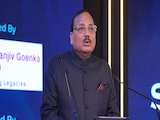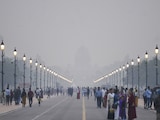An RTI reply from the Ministry of Rural Development has lifted the veil off India's social security system, exposing a stark truth: while governments boast of welfare for the weakest, the elderly, widows, and disabled are still being handed ₹300 to ₹500 a month as "pension". These amounts have not changed for over a decade - 18 years in some cases, 13 in others. At the same time, legislators across the country have repeatedly increased their own salaries and pensions. In Madhya Pradesh, there is now a proposal to raise MLAs' salaries by nearly 45% and double the pensions of former MLAs. The contrast is damning.
Unchanged For Decades
A response to an RTI plea, filed by Chandrashekhar Gaur of Neemuch, reveals the history of the National Social Assistance Programme (NSAP), launched on August 15, 1995. Initially, it had three components: the National Old Age Pension Scheme, the National Family Benefit Scheme, and the National Maternity Benefit Scheme. In 2000, the Annapurna Scheme was added to provide 10 kg of free food grains per month to senior citizens not covered under pensions, while the maternity benefit was shifted to the Ministry of Health. In 2007, the definition of "destitution" was dropped in favor of BPL (below poverty line) criteria, and the pension amount was raised from a meagre ₹75 to ₹200. In 2009, the Indira Gandhi Widow Pension and Indira Gandhi Disability Pension schemes were introduced. In 2011, the old age pension for those over 80 years was increased to ₹500, and in 2012, widows and disabled persons were fixed at ₹300 a month. Since then, there has been no revision.
A National Embarrassment
The current status is a national embarrassment. Widows between 40 and 79 years continue to get ₹300 per month; those above 80 years get ₹500. The old age and disability pensions remain at the same rates. The RTI response makes it clear: there is no proposal to increase the amount, nor to reduce the age criteria. In 2024-25, the government disbursed ₹6,843 crore to 1.47 crore elderly beneficiaries, ₹3,610 crore to 1.02 crore widows, and ₹243 crore to 8.5 lakh disabled persons. The numbers look impressive on paper, but broken down, they translate into no more than ₹10-15 per day for survival, barely enough to buy a cup of tea, let alone food, medicines, or dignity.
Now place this beside what MLAs in Madhya Pradesh are preparing to award themselves. For nine years, they have drawn a basic salary of ₹30,000, plus an election allowance of ₹35,000 and additional allowances that bring the total to roughly ₹1.1 lakh per month. The Vidhan Sabha has now recommended a hike of ₹50,000, taking their monthly pay to ₹1.6 lakh. A proposal has also been placed to double the pension of former MLAs from ₹35,000 to ₹70,000. If implemented, Madhya Pradesh MLAs will earn more than their counterparts in Rajasthan and Gujarat.
Also Read | Karnataka Doubles Salaries For Ministers, MLAs Amid Fund Shortage Row
The perks do not end there. MLAs enjoy free first-class AC travel by train up to 10,000 kilometres a year, medical allowances of ₹10,000, and daily allowances of ₹2,500 for attending assembly sessions. Ministers are much better placed: the Chief Minister receives ₹2 lakh per month, cabinet ministers ₹1.7 lakh, state ministers ₹1.45 lakh, and the Speaker ₹1.87 lakh. Out of 230 MLAs in the state, 31 are ministers whose salaries are paid by the General Administration Department, while the Assembly pays the rest. The proposed increase will add an additional burden of ₹99 lakh to the state treasury.
Crorepati MLAs
And yet, the irony could not be sharper. According to the Association for Democratic Reforms (ADR), 205 out of Madhya Pradesh's 230 MLAs are crorepatis, with 102 owning assets worth more than ₹5 crore. In the previous assembly, the number was 187. Despite this, both ruling and opposition members argue that their current salaries are "too low". Congress MLA Atif Aqeel has said higher salaries will help them "develop their constituencies better", while former BJP minister Arvind Bhadoria insists that MLA pay is merely "an honorarium" to allow them to serve with dignity.
So, here is the reality, laid bare by the RTI. Millions of elderly, widows, and disabled citizens - those who truly depend on state support - are scraping by on pensions that have remained unchanged for over a decade and which are insultingly low in an age of soaring inflation. Meanwhile, crorepati legislators across party lines are united in demanding more for themselves and doubling pensions for their predecessors. It is not just hypocrisy; it is systemic cruelty disguised as governance.
An Indictment Of The State
The social security pension system, envisioned as a safety net, has now become a consolation certificate. It exists on paper, impressive in numbers but meaningless in practice. The government claims crores of rupees have been released, but the beneficiary gets only coins. At the same time, the political class, already wealthy, pushes for higher salaries and bigger pensions with barely a murmur of dissent.
The question is simple and unavoidable: what kind of democracy accepts that its weakest citizens must live on ₹300 a month while its richest representatives debate whether ₹1.1 lakh is "too little"? The RTI reply is not just a bureaucratic response. It is an indictment of a state that prioritises the comfort of the powerful over the survival of the powerless. Unless confronted, this imbalance will persist, and social security in India will remain exactly what it is today: a cruel joke on the poor.
(The author is Executive Editor, NDTV)
Disclaimer: These are the personal opinions of the author















